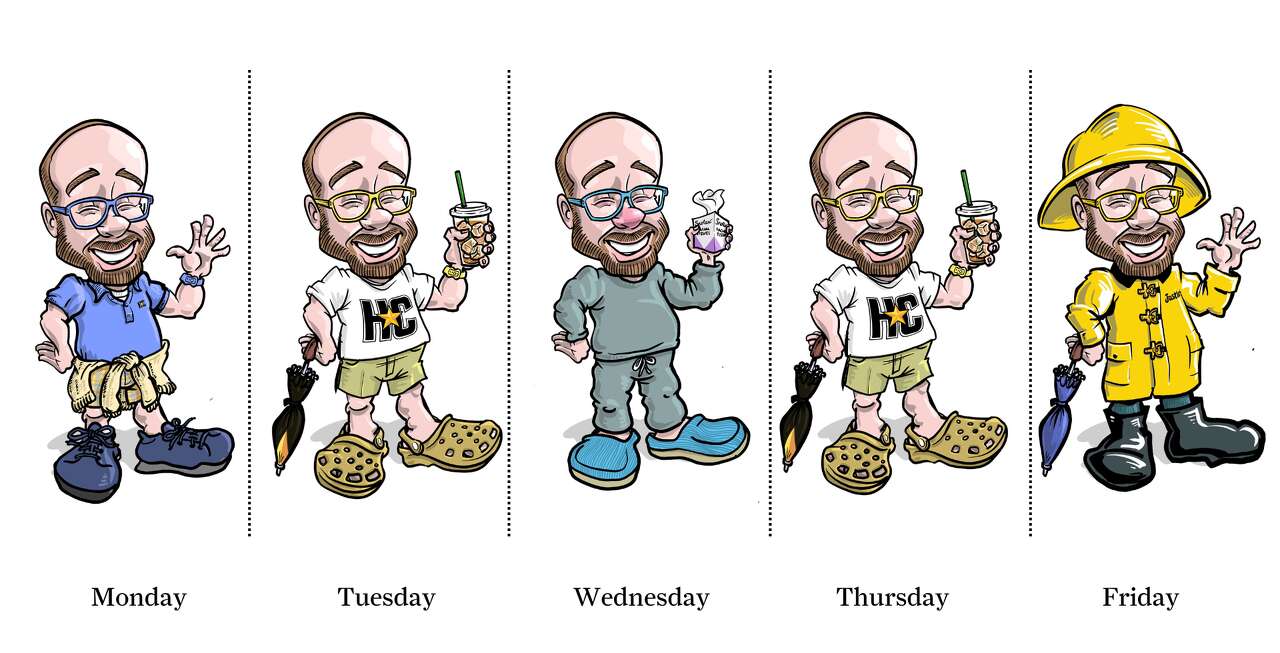Spring Sale |
Flying for Spring Break? Expect a bumpy ride.
Airlines are expecting a record number of passengers for Spring Break this month. For passengers like me who white-knuckle the armrests the entire flight, it's nice to have an idea of the amount of turbulence the flight is expected to experience.
I looked into what exactly turbulence is and if it's increasing over time.
Spoiler alert: it is.
According to a study published last year, severe turbulence increased by 55% from 1979 to 2020. Researchers also concluded that turbulence will be more frequent in the future because of climate change triggered by greenhouse gas emissions.
Thankfully, pilots are trained to avoid turbulence but it's sometimes unavoidable. However, there are ways to predict the amount of turbulence you should expect on a flight.
To learn how, check out my story. It might not entirely ease your flight anxiety, but it could help.
 | Ryan Nickerson, Weather Reporter |
Justin's Five Day Fit Check

Photo by: Ken Ellis
Temperatures this week warm up into the 70s before topping out in the lower 80s Wednesday and Thursday. We can't rule out an isolated shower Tuesday, but better rain chances arrive Thursday afternoon into Friday. Pollen levels will be high all week.

Control line is a term the National Wildfire Coordinating Group uses that describes a constructed or natural barrier to control a fire.
Wildfire crews fighting the Smokehouse Creek fire in the Texas Panhandle used control lines to contain the largest wildfire in Texas history.
Today in weather history
On March 11, 1917, a tornado that ripped through eastern Indiana killed 21 people in New Castle, about 40 miles east of Indianapolis, destroying 350 buildings before dying out near the Ohio border.
Something to see

Photo by: National Weather Service
Beach days are a quintessential part of summer fun, but they come with their own set of hazards. One common danger often overlooked is rip currents.
As many as 61 people lost their lives to rip currents along the Texas coastline between 2010 and 2023, according to data from the National Oceanic and Atmospheric Administration.
Check out tips on how to spot a rip current and remain safe.
 | Ask a Meteorologist |
Severe weather awareness is critical as we get deeper into the spring storm season. Here's how to sign up for wireless emergency alerts:
For Android:
1. Open the "Settings" app on your device.
2. Scroll down and tap on "Apps & notifications" or "Notifications" depending on your device.
3. Look for the "Advanced" or "Advanced settings" option and tap on it.
4. Select "Emergency alerts."
5. Toggle on "Emergency alerts" or "Wireless Emergency Alerts."
For iPhones:
1. Open the "Settings" app on your iPhone.
2. Scroll down and tap on "Notifications."
3. Scroll to the bottom of the page and find "Government Alerts."
4. Toggle on "Emergency Alerts" to receive Wireless Emergency Alerts.
Once enabled, your device will automatically receive alerts from authorized government agencies during extreme weather conditions and natural disasters. It's a simple step in ensuring your safety during emergencies.
Weather wonk trivia
Many allergy sufferers will be sniffling and sneezing this week as tree pollen counts remain especially high. When does the Houston Health Department measure tree pollen?
A) February to March
B) January to April
C) March to April
D) February to April
Shoutout to Jeanne Keyes for answering last week's Weather Wonks trivia question! The answer to last week's questions was 58 mph; 1 inch hail.
Meet the Team

Photo by: Susan Barber
The 713 Weather Radar newsletter is fueled by reporting from meteorologist Justin Ballard and reporter Ryan Nickerson. Texas Weather Science Editor Roberto Villalpando edits this newsletter.
You can reach out to any of them by emailing them directly at firstname.lastname@houstonchronicle.com or by replying to this email.
|
Unsubscribe | Manage Preferences | Privacy Notice

Houston Chronicle
4747 Southwest Freeway, Houston, TX 77027
© 2024 Hearst Communications


No comments:
Post a Comment